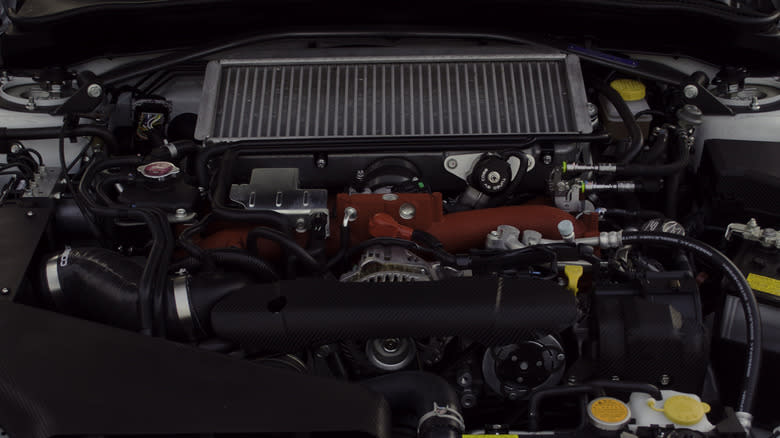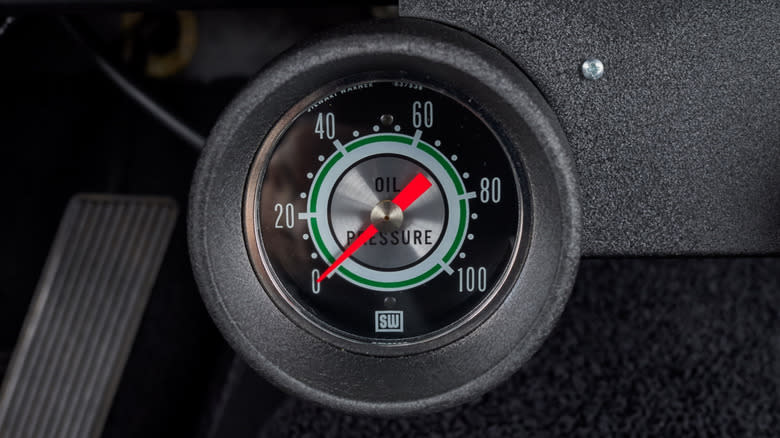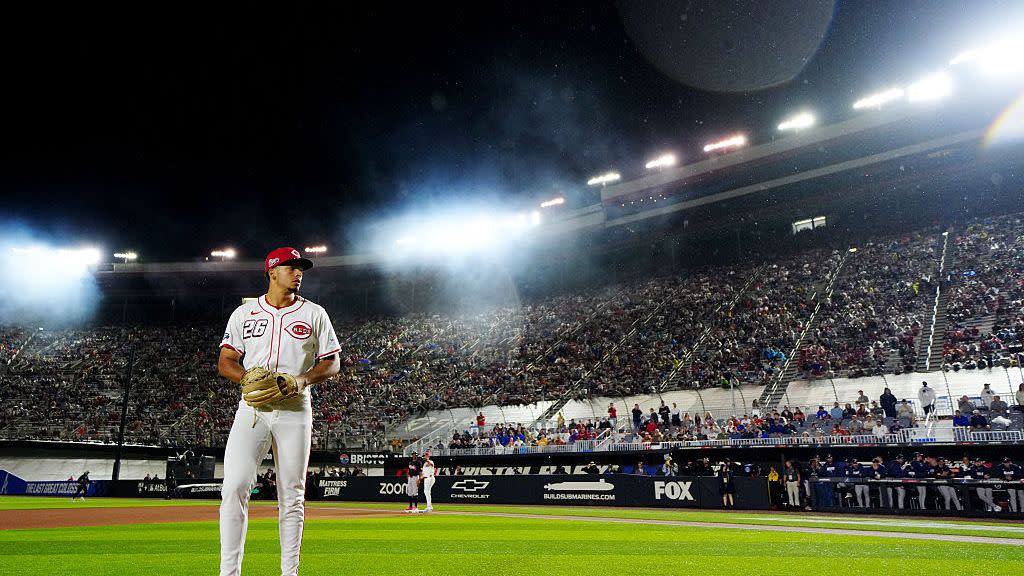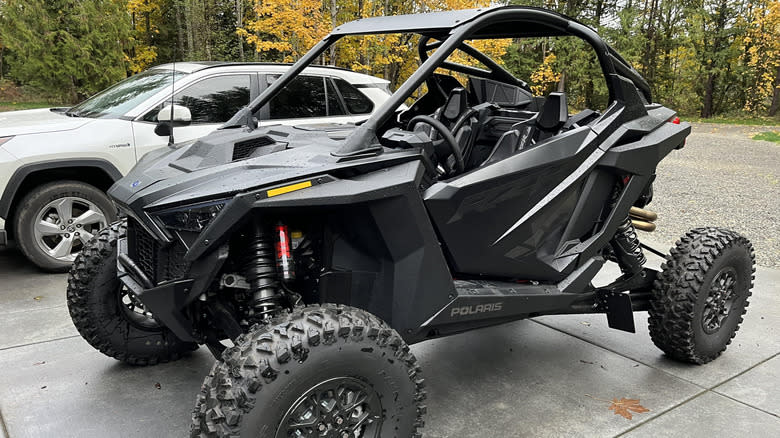
When you think of boxer engines with their flat, horizontally opposed architecture, it's likely that vintage Volkswagens such as the original Beetle spring to mind. Or perhaps Porsche, which named an entire car after that type of engine. But Subaru's affinity for pancake engines goes back a way, too. In 1965, the brand dropped its EA-52, which at 900 cubic centimeters and 55 horsepower was both smaller and less powerful than many modern motorcycle engines.
By 1989, things had improved considerably with the release of the EJ series in North America, which provided the gusto behind some of Subaru's legendary all-wheel drive World Rally Championship cars. For example, the 250-plus horsepower WRX (World Rally Experimental) like this one that Colin McRae drove to three consecutive victories in the mid-late 1990s. Remarkably, the EJ continued in production for longer than some readers have been alive — a whopping 32 years.
Although the 16-valve EJ engine was used in multiple Subarus, including the Forester, Outback, and Legacy, it's perhaps most associated with hopped-up versions for the aforementioned WRX. So when the last Impreza-based WRXs rolled off the assembly line in 2021, it was as good a time as any to retire the venerable EJ. The simple fact is that it was getting increasingly difficult to meet stricter emissions and fuel economy standards with such an old engine, no matter the ease of modding that appealed to enthusiasts.
Read more: These V6 Engines Put The LS1 V8 To Shame
Apparently, EJ Swaps Are A Thing

Replacing the hallowed EJ series was a tall order, and initially Subaru chose the FB family of engines, a third-generation boxer already used in the Subie lineup starting with the Forester in 2010. Specifically, the WRX got the 2.4-liter FA24F. However, the FA24's reputation was called into question by several high-profile engine failures from oil starvation under track conditions in Subaru's BRZ and its badge-engineered twin, Toyota's GR86.
More recently, a fourth generation of the boxer engine was announced: the CB, short for "compact (or concentration) boxer." But it's no exaggeration to say that the CB18 rollout was a debacle. A sensor malfunction in that engine resulted in Subaru's decision to halt production and cease worldwide export of three models during 2022: the Forester, Outback, and Levorg. However, not before 54,000 vehicles had already left the factory.
To be sure, it wasn't all rainbows and unicorns over the EJ's long lifespan, either. As outlined in Jalopnik's comprehensive guide to Subaru engines, certain iterations are known to leak oil like crazy while others prefer a steady diet of head gaskets. Still, it's an immensely popular engine that's prevalent not just in Subarus, but swapped into kit cars, Mazda Miatas, airplanes, and even motorcycles. Heck, it's like a Japanese equivalent of the Chevy LS, which is high praise indeed.
Want more like this? Join the Jalopnik newsletter to get the latest auto news sent straight to your inbox...
Read the original article on Jalopnik.






Comments